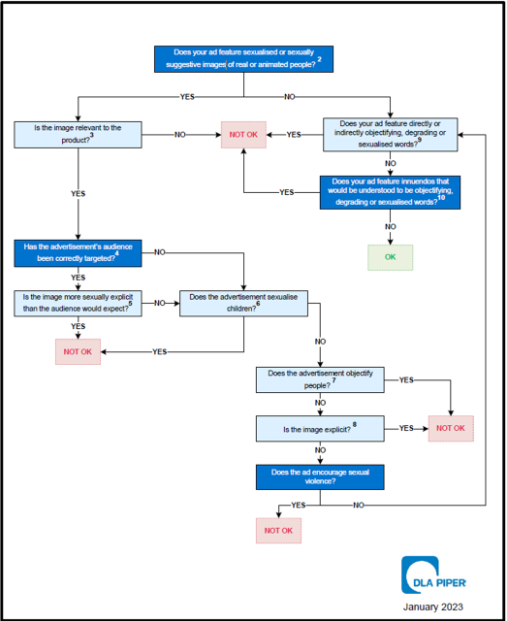The 7-Step Blueprint How to Create a Killer Brand Strategy from Scratch

Understanding how to create a brand strategy starts with clarifying your vision. This involves articulating your purpose, mission, and long-term aspirations. A compelling brand vision acts as a guiding star, informing every decision from marketing campaigns to product development. It must resonate emotionally with your audience while providing clear strategic direction internally. Vision clarity fosters consistency and positions the brand as both authentic and aspirational.
Conducting Deep Market Research
Effective strategy begins with exhaustive market intelligence. This includes analyzing competitors, identifying gaps, and understanding customer pain points. Mapping consumer behavior and trends allows brands to discover opportunities for differentiation. Quantitative and qualitative data, surveys, focus groups, and social listening inform positioning, messaging, and product development. Strategic insights derived from this research underpin credibility and competitive advantage.
Crafting Your Brand Identity
Brand identity encompasses visual elements, tone of voice, and experiential design. Logos, color palettes, typography, and imagery create immediate recognition, while brand language shapes perception. Cohesive identity ensures that every touchpoint, from digital channels to physical experiences, communicates the brand’s essence. A meticulously designed identity reinforces memorability and emotional connection, serving as a tangible expression of the underlying strategy.
Defining Your Target Audience
Precise audience definition enhances relevance and resonance. Segmenting by demographics, psychographics, and behavioral patterns allows tailored messaging. Understanding motivations, aspirations, and challenges ensures that campaigns are meaningful and persuasive. Strategic targeting increases engagement, loyalty, and conversion while minimizing wasted resources. The more granular the audience understanding, the more impactful the brand narrative.
Establishing Brand Positioning
Positioning articulates the unique value proposition in the market landscape. It clarifies why your brand exists, what differentiates it, and how it should be perceived relative to competitors. Strategic positioning involves evaluating market perception, competitive gaps, and consumer expectations. A strong positioning statement serves as a framework for messaging, advertising, and product development, ensuring consistency across all interactions.
Developing Messaging and Storytelling
Compelling storytelling transforms brand values into narratives that captivate and inspire. Messaging frameworks, key messages, and brand archetypes allow consistent communication across channels. Emotional resonance and authenticity elevate campaigns, creating memorable experiences. Strategic storytelling aligns with customer journeys, reinforcing trust, recognition, and advocacy. Effective narratives balance creativity with strategic intent, producing measurable business impact.
Implementing and Measuring Strategy
Execution transforms conceptual strategy into tangible outcomes. Integrated campaigns, content marketing, social media engagement, and experiential initiatives operationalize the brand vision. Metrics such as brand awareness, engagement, conversion, and loyalty track performance. Iterative assessment allows refinement, ensuring that strategic goals are met while adapting to market shifts. Continuous measurement enhances resilience and growth.
Visual and Experiential Branding
Design elements extend beyond aesthetics, influencing perception and emotional response. Experiential branding encompasses retail environments, packaging, digital interfaces, and customer interactions. Consistency in these areas reinforces brand credibility and strengthens recognition. Strategic application of sensory elements amplifies recall and cultivates lasting consumer loyalty.
Competitive Benchmarking
Analyzing competitor strategies provides insights into market dynamics and differentiators. Benchmarking identifies best practices, areas of weakness, and potential innovation opportunities. Understanding competitor positioning allows strategic adjustments that enhance differentiation and market relevance. Benchmarking informs tactical decisions in pricing, messaging, and customer engagement.
Establishing Core Brand Values
Values anchor a brand’s identity and inform internal culture. Clearly articulated principles guide decision-making, employee behavior, and external communications. Authentic alignment between values and actions builds trust, fosters loyalty, and enhances reputation. Core values also act as a filter for strategic initiatives, ensuring alignment with long-term objectives.
Crafting a Brand Promise
The brand promise defines the tangible and intangible benefits delivered to customers. It encapsulates expectations, commitments, and differentiators in a concise articulation. Delivering consistently on this promise builds credibility, strengthens emotional bonds, and increases advocacy. The promise becomes a touchstone for marketing, product development, and customer service.
Multi-Channel Integration
Consistency across digital, physical, and experiential channels amplifies brand coherence. Integrated campaigns synchronize messaging, visuals, and engagement strategies. Omnichannel alignment enhances customer experience, reinforces perception, and increases retention. Strategic integration ensures that brand presence is unified, reinforcing recognition and trust.
Designing a Brand Architecture
Brand architecture organizes product lines, sub-brands, and extensions for clarity and efficiency. Decisions between monolithic, endorsed, or hybrid structures influence perception, cross-selling potential, and brand equity. Thoughtful architecture simplifies communication, reduces confusion, and maximizes the impact of marketing efforts.
Content Strategy Alignment
Content serves as a conduit for brand narrative, values, and thought leadership. Aligning content strategy with brand objectives ensures relevance, consistency, and engagement. Editorial calendars, content pillars, and thematic campaigns facilitate coherent storytelling and sustained audience interest. Strategic content enhances authority, trust, and market differentiation.
Emotional and Cognitive Branding
Psychological insights inform brand resonance at both emotional and cognitive levels. Emotional branding fosters attachment, loyalty, and advocacy, while cognitive branding emphasizes clarity, utility, and trustworthiness. Balancing these dimensions ensures a holistic brand experience, creating deeper connections and sustained engagement.
Social Proof and Community Building
Testimonials, case studies, influencer partnerships, and user-generated content enhance credibility. Community engagement fosters belonging, amplifies advocacy, and drives organic reach. Building a loyal network around the brand strengthens reputation and reinforces messaging. Strategic cultivation of social proof elevates perceived value and trustworthiness.
Brand Governance and Guidelines
Comprehensive guidelines protect consistency across internal and external executions. Rules for logo usage, typography, color, tone, and messaging prevent dilution. Governance structures define decision-making authority, approval workflows, and accountability. Effective governance ensures brand integrity, coherence, and long-term sustainability.
Crisis Management and Reputation Strategy
Preparedness for reputational challenges protects brand equity. Scenario planning, communication protocols, and rapid response mechanisms mitigate risk. Strategic alignment between crisis response and brand values maintains trust and credibility during disruptions. Reputation strategy integrates proactive and reactive measures to safeguard perception.
Employee Advocacy and Internal Branding
Employees act as ambassadors, translating strategy into authentic experiences. Internal engagement, training, and communication ensure alignment with brand values and messaging. Empowered employees enhance credibility, customer experience, and brand culture. Strategic internal branding fosters consistency and strengthens overall impact.
Strategic Partnerships and Alliances
Collaborations with complementary brands or influencers extend reach and reinforce positioning. Partnerships must align with brand values and audience expectations. Strategic alliances amplify credibility, provide access to new markets, and strengthen competitive advantage. Partner selection and management are critical to maintaining authenticity and impact.
Brand Experience Mapping
Mapping customer journeys identifies touchpoints, friction, and opportunities for engagement. Experience design integrates visual, verbal, and sensory elements to create memorable interactions. Strategic attention to customer experience ensures consistency, delight, and loyalty across all channels.
Performance Metrics and Analytics
KPIs, dashboards, and reporting systems track brand performance, measuring awareness, perception, engagement, and loyalty. Data-driven insights inform iterative adjustments and strategic recalibration. Analytics enable objective evaluation, guiding decision-making and resource allocation.
Innovation and Brand Evolution
Continuous innovation maintains relevance and competitive advantage. Product development, service enhancements, and market exploration align with evolving audience expectations. Strategic evolution balances core brand essence with adaptability, ensuring long-term sustainability.
Cultural Relevance and Localization
Adapting branding to cultural context increases resonance and authenticity. Localized messaging, imagery, and experiences enhance relatability while preserving global brand coherence. Strategic localization fosters acceptance, loyalty, and market penetration.
Competitive Differentiation
Distinctive positioning emphasizes uniqueness in value, messaging, or experience. Differentiation strategies highlight functional, emotional, or symbolic benefits. Clear differentiation enhances memorability, mitigates price sensitivity, and strengthens market positioning.
Integrated Marketing Communications
Coordinating advertising, PR, content, social media, and experiential marketing ensures unified messaging. Strategic integration reinforces positioning, amplifies impact, and maximizes ROI. Cohesive communication strengthens brand recognition and market presence.
Strategic Scenario Planning
Anticipating market shifts, competitive dynamics, and audience evolution allows proactive strategy adjustment. Scenario planning mitigates risk, identifies opportunities, and supports long-term brand resilience. Strategic foresight informs both tactical and operational decisions.
Sustainability and Social Responsibility
Incorporating environmental and social initiatives aligns brand purpose with societal expectations. Strategic integration of sustainability enhances credibility, loyalty, and stakeholder trust. Responsible branding fosters differentiation and long-term positive impact.
Brand Equity Measurement
Assessing brand strength involves evaluating recognition, perception, loyalty, and financial value. Metrics such as brand valuation, market share, and net promoter score quantify success. Strategic monitoring of equity guides investment, communication, and innovation decisions.
Omnichannel Customer Engagement
Seamless interaction across digital, retail, and experiential platforms enhances loyalty and advocacy. Strategic integration of touchpoints reinforces identity, values, and positioning. Omnichannel engagement ensures consistent, impactful customer experiences.
Brand Story Evolution
Evolving narratives maintain relevance while reinforcing core essence. Story updates reflect cultural shifts, market trends, and audience insights. Strategic narrative evolution strengthens connection, engagement, and brand longevity.
Influencer and Thought Leadership Strategy
Leveraging credible voices extends reach and authority. Strategic alignment with influencers, experts, or thought leaders enhances perception, trust, and engagement. Thought leadership positions the brand as an innovator and industry authority.
Continuous Optimization and Iteration
Regular review, testing, and refinement maintain strategy effectiveness. Strategic iteration incorporates feedback, analytics, and market developments. Continuous optimization ensures sustained performance, relevance, and competitive advantage.




